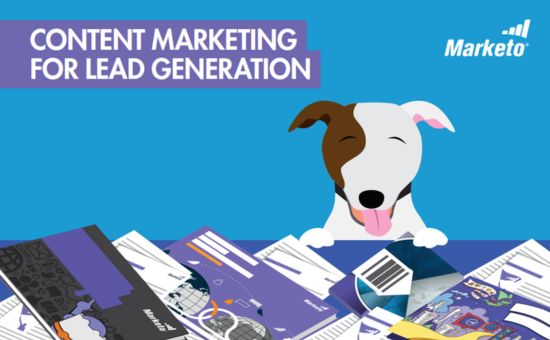Common Features in Marketing Automation | Adobe Experience Cloud
Lead Generation
features overview
Marketing automation platforms offer extensive features such as email marketing, landing pages, and forms, campaign management, lead nurturing/scoring, lead lifecycle management, CRM integration, social media marketing capabilities, and marketing analytics. Each vendor excels in different areas within these categories, so we’ve also highlighted the prevalence of each feature in the tables below:

Email and online marketing
Email marketing is often a critical online marketing channel, and it becomes even more effective when integrated with landing pages and forms in a single platform. Marketing automation systems can typically replace an email service provider (ESP), though email capabilities may vary by vendor.
Batch Email Marketing
This feature allows you to create WYSIWYG emails and newsletters using user-friendly design tools, send emails to customer and prospect groups, and track and report on delivery, open, and click rates. It provides a comprehensive view of email performance.
Email Deliverability and Reputation Management
Sending emails is only effective if they reach recipients’ inboxes. Since marketing automation usually replaces standalone ESPs, your vendor should offer tools to ensure inbox delivery. This includes opt-in management, bounce handling, unsubscribe processing, suppression lists, and advanced services like dedicated IP addresses, email previews, spam checking, link validation, and delivery monitoring.
Real-Time Triggered Emails
Triggered emails allow you to respond to specific customer behaviors and events with timely, relevant messages. For example, if a prospect clicks a link, a sales rep logs a call, or a lead score reaches a certain level, you can automatically send a targeted email. Personalized, real-time emails based on behavioral data can boost open rates by 50% and conversion rates by 350% (Jupiter Research).
Landing Pages
Landing pages are essential for many marketing campaigns. By directing clicks to a custom landing page instead of a generic homepage, marketers can improve conversion rates. Many marketing automation platforms include WYSIWYG page builders, allowing marketers to create pages without IT support.
Forms
Forms placed on landing pages, microsites, or corporate websites capture user information and add new leads to the database. Some systems feature progressive profiling, which recognizes repeat visitors and asks different questions over time to build a more complete profile. Others offer social sign-on options for easier registration.
Testing
Split testing helps identify what strategies work best to maximize response rates, potentially increasing conversions by 48% or more (MarketingSherpa). You can test various elements, such as email subject lines, copy, graphics, calls to action, and frequency, as well as landing pages and forms.
Dynamic Content
Customized emails and landing pages for different segments result in higher engagement. You can tailor text, images, and calls to action based on criteria like location, industry, job title, and more. For instance, send distinct messages to active opportunities versus early-stage prospects.
Mobile Optimization
With mobile devices increasingly used in business, marketing platforms must support mobile-optimized emails and landing pages.
Sales Emails
This feature enables personalization of “from addresses” and signatures on behalf of individual sales reps, making automated emails appear as though they come directly from the assigned sales owner.
Lead management
Lead management is a core feature of marketing automation platforms, with most vendors offering some level of functionality.
Marketing Database
This serves as the central repository for all your key marketing assets, including leads and contacts. It goes beyond CRM data, providing a comprehensive view of all interactions each person has with your company, such as website visits, email clicks, scoring changes, and data history.
Single Customer View
Advanced marketing automation solutions expand the marketing database to include information from third-party systems, social networks, and in-house applications. This provides a unified view of customers and prospects, enabling personalized interactions and comprehensive customer lifecycle management.
Segmentation
Precise segmentation of your database is crucial for targeting the right audience. Filters should combine demographic, household, and firmographic details (e.g., job title, company size, location) with behavioral and CRM data. For example, you might target high-score leads in a specific region who visited your site in the past week or contacts who registered for an upcoming event.
Multi-Touch Campaigns / Lead Nurturing
This feature allows you to automate drip marketing campaigns that deliver relevant messages based on prospect behaviors and campaign steps. It includes automated email flows and other channels, often used for lead nurturing to build relationships over time.
Online Behavior Tracking
This functionality monitors prospects’ email interactions, website visits, keyword usage, and social media activity to understand their interests and buying stages.
Lead Scoring and Grading
Lead scoring automates lead qualification based on demographic and behavioral criteria. Advanced features may include scoring adjustments for inactivity, multiple scoring models for different product lines, and support for both demographic fit and engagement.
Data Quality and Enhancement
CRM data often contains duplicates and missing information. Marketing automation platforms address this through de-duplication, cleansing, and data appending, ensuring data accuracy and completeness.
Automated Sales Alerts and Tasks
Platforms can automate task creation and send real-time sales alerts via email, RSS, or mobile, ensuring that sales teams receive and act on lead information promptly.
CRM Integration (Data Sync)
Integration levels vary among platforms. Some offer automated field mapping and near real-time data syncing, while others may have limited or manual capabilities. It’s important to evaluate your needs and compare them with vendor offerings.
Lead Lifecycle Workflows
This feature extends automation beyond email, integrating with CRM systems to create complete lead management workflows. It includes automated updates to lead status, list management, lead routing, and nurturing processes.
Sales Intelligence
Sales intelligence tools provide sales reps with key insights into prospect behavior, such as email interactions and web activity, allowing them to focus on high-priority leads and tailor their conversations.
Sales Campaigns
Some platforms allow marketing teams to set up campaigns that sales reps can use, or even enable sales to run their own targeted campaigns.
Revenue Cycle Modeling
This feature defines lead stages within the revenue cycle, automates the rules for lead progression, and establishes a clear framework for sales and marketing processes. It supports the implementation of SLAs for lead response times and handling.
Discover essential features in marketing automation tools, from email marketing to CRM integration. Download the guide for insights!
- features overview
- Email and online marketing
- Lead management
- marketing programs/ lead generation
- social marketing
- analytics
- resource management
- infrastructure
- Advanced functions
Number of Pages:
- 13 pages
Pricing:
- Free






